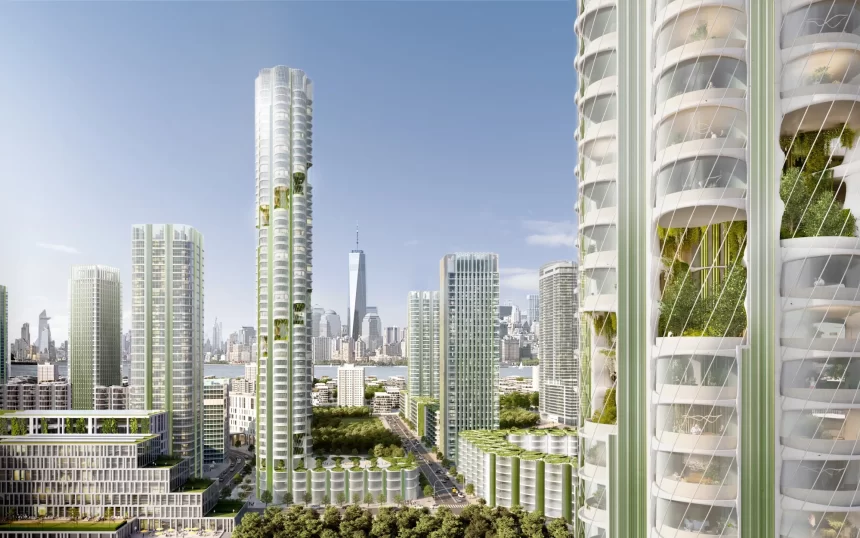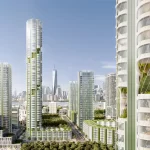It’s been 10 years since the creation of the first vertical forest, Milan’s Bosco Verticale. How has it inspired other buildings – and affected their residents’ happiness and health?
In 2007, Italian architect Stefano Boeri witnessed the frantic construction of a city in the Dubai desert dominated by energy-wasting skyscrapers covered in glass, ceramic and metal. All these materials, he tells the BBC, “reflected sunlight, generating heat in the air and especially on the urban ground, where pedestrians walked”. Three thousand miles away, he had just begun working on his own design for two very tall buildings in a neglected area of northern Milan. “Suddenly, it occurred to me to create two biological towers… covered not with glass, but with leaves,” he says. The design would invite fauna and flora into this industrial wasteland and cool the air inside and out, offering a radical new architectural prototype that, he explains, “integrates living nature as a constitutive part of it”. The startling result was the world’s first “vertical forest”.
The multi-award-winning design is now 10 years old, its plants maintained by “flying gardeners” harnessed to the side of the buildings, and its occupants up to three degrees cooler, as the foliage releases water vapour and filters the sunlight. To mark this anniversary, architectural firm Stefano Boeri Architetti has released a new book, Bosco Verticale: Morphology of a Vertical Forest, featuring essays by leading voices working at the intersection of nature and architecture, alongside images by architectural photographer Iwan Baan. The book traces the evolution of the project and the principles it espouses, and, say the publishers, Rizzoli “celebrates an architectural work that has become the symbol of a renewed collective sensibility toward care for the environment and the plant world”.
In a reversal of the usual architectural hierarchies, the book describes the vertical forest as “a home for trees and birds, that also houses humans”. It draws on philosophies and texts that have influenced it, such as The Secret Life of Trees (2006) by British biologist Colin Tudge, a work that explains the crucial role trees play in our lives in sequestering carbon, producing glucose and providing shade. It also quotes the British ethologist Dame Jane Goodall. As populations increase, she asserts, “it is desperately important that this growth should be accompanied by new incentives to bring the natural world into existing cities and into the planning of new ones”.
Since the completion of Milan’s Vertical Forest, a green wave of plant-rich construction has begun reintroducing nature into our cities, from Dubai to Denver, Colorado; Antwerp to Arlington, Virginia; with Africa’s first vertical forest scheduled to break ground in Cairo later this year. Answering critics who doubted the concept’s affordability is the Trudo Vertical Forest in Eindhoven, The Netherlands (completed 2021), a social housing project with a rent cap of €600 (£510) per month.
A sense of connection
Over in Montpellier, France, a third of The Secret Gardens − a forested residential development designed by Vincent Callebaut Architectures, Paris, and due for completion later this year − will be reserved for affordable housing. In integrating practices such as rooftop agriculture and water recycling, The Secret Gardens also “addresses the climate crisis by restoring the human-nature connection”, Vincent Callebaut tells the BBC. “By transforming residents into urban gardeners and façades into carbon sinks, this building demonstrates that ecology isn’t a constraint but a lifestyle philosophy,” he says.










